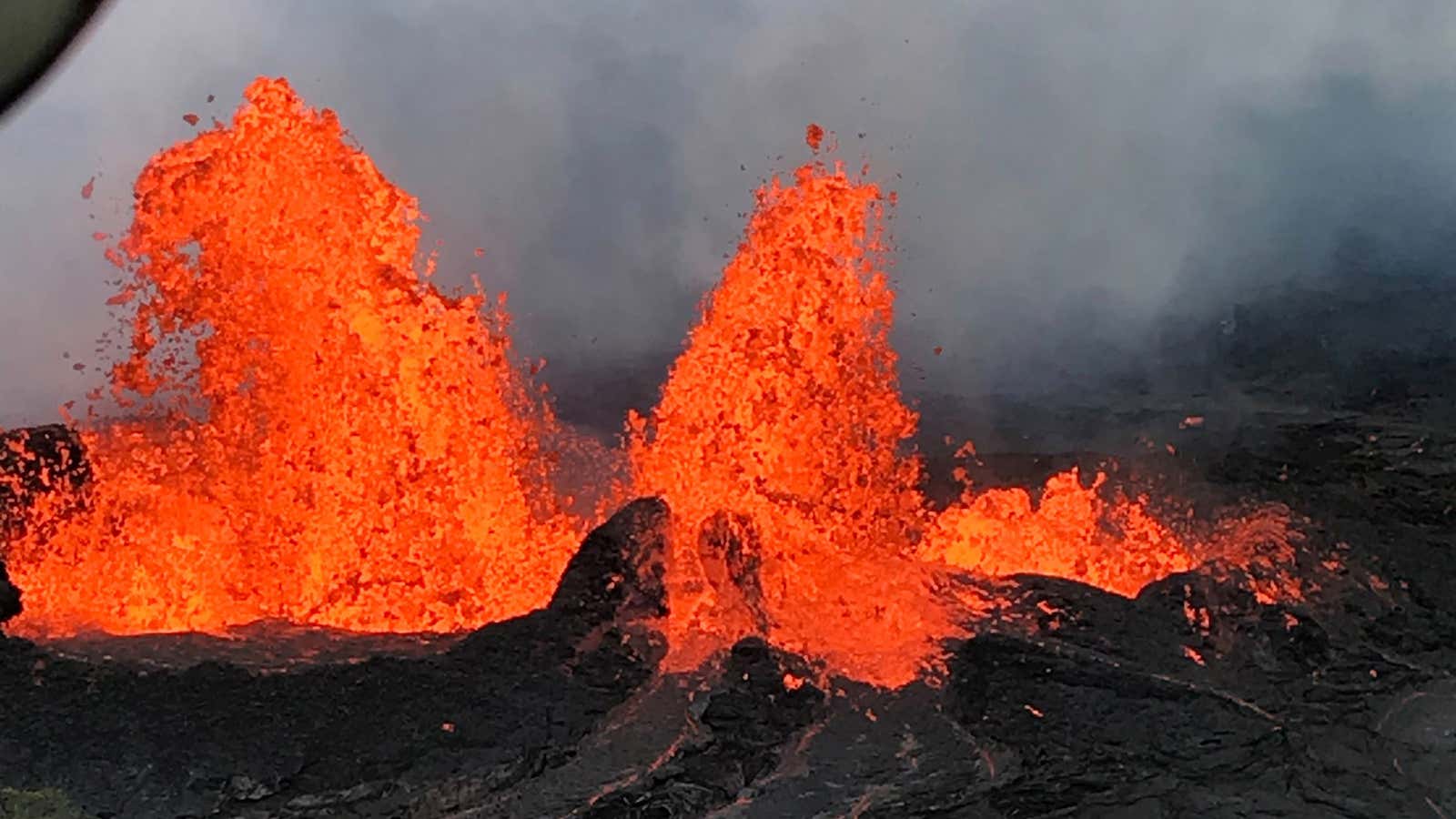Mount Kilauea started erupting almost three weeks ago, and has forced over 1,700 people to evacuate. The volcano’s main crater, Puʻu ʻŌʻō, has been spewing smoke and potentially noxious gases downwind during that time, and some 16 fissures—like burst pipes of lava running underneath the ground—are now oozing lava. This lava has destroyed dozens of homes, and in one case is dangerously encroaching on a local power plant.
In addition to the lava, these fissures have caused another, more bizarre, form of destruction: ridges of blue flames burning on the streets.
On May 23 (Wednesday), the US Geological Survey’s Volcano Hazards Program posted a video on Facebook of one of these fissures taken around 11:30pm local time the night before from a subdivision.
“When hot lava buries plants and shrubs, methane gas is produced as a byproduct,” the post explains. “Methane gas can seep into subsurface voids.” When the gas in these below-ground pockets reach a certain pressure, it’ll burst through the top, says Wendy Stovall, a vulcanologist at the USGS Volcano Hazards Program, or as we can see in the images posted to Facebook, emerge from cracks in the ground several feet away.
Methane burns blue. You likely used methane to create a blue flame on a Bunsen burner in your high school chemistry class. Some gas stoves also use natural gas, although many (and most outdoor grills) use propane, another combustible fuel.
Methane in its pure form is four hydrogens atoms attached to one atom of carbon. The natural gas we use at home is primarily made of methane, though it contains trace amounts of other gases, like ethane, propane, butane, and times carbon dioxide. For the most part, though, what comes out of your stove is this five-atom molecule. In the presence of enough oxygen, methane molecules become excited—the technical term for when electrons get enough energy to move away from their ground states—and give off a glowing blue color, as well as water vapor and carbon dioxide formed from reacting with the oxygen. In certain cases, the methane can give off heat as high as 1,960°C (3,560°F),
Scientists aren’t sure when Kilauea’s eruption will stop, but it’s important to remember that these effects are highly localized. “It’s really this very small area in this south eastern edge of the island and the summit [of Kilauea] that are experiencing these issues,” Stovall said in a press conference.
Correction: This article has been updated to state that methane is four hydrogen atoms attached to a single carbon atom.
